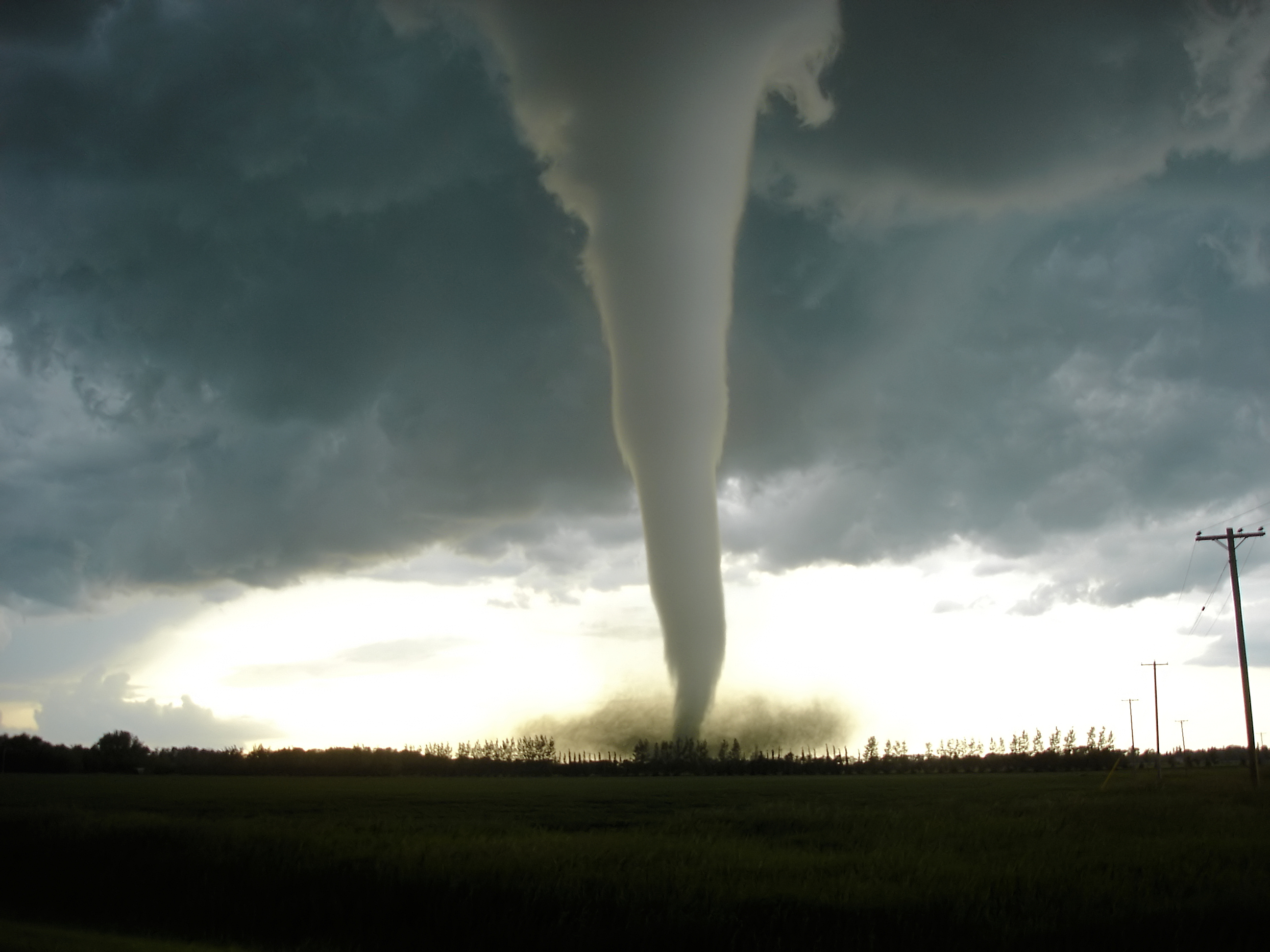 |
| F5 in Manitoba by |
Tornadoes are Most Common in the United States
While not constricted to the United States, tornadoes most often occur in the spring and fall months in the U.S. An average of 800 to 1,000 reported tornadoes occur in the United States annually. They cause an average of 70 to 80 deaths in the country and more than 1,000 injuries–much more some years. Property damage from tornadoes can be in the billions in a single year.
Tornadoes Can Move and Spin Very Fast
Tornadoes are columns of air that appear during thunderstorms, however small. The columns spin or rotate at varying speeds from 400 miles per hour to more than 300 miles per hour. Tornadoes can travel at speeds up to 70 miles per hour, making them very difficult to outrun, even in a vehicle. They are also quite unpredictable, which lends to the danger they present.
The Paths of Tornadoes Can be Terrifyingly Wide and Long
The width of a tornado can be as much as a mile and wipe out whole neighborhoods as it goes along. Once it touches down, a tornado can cut a path 50 miles long before dissipating. Tornadoes like these are the exception rather than the rule, but it is best to stay out of the way of any tornado.
Not All Tornadoes Form Noticeable Funnels
It is a mistake to be on the lookout for noticeable funnels during thunderstorms, despite them being a tornado's most noteworthy characteristic. Tornadoes are, by nature, invisible. Only when a tornado sucks in moisture, dirt or debris does it become visible. Even then, rain or dark clouds may hinder a person's view of the tornado.
Tornadoes Can Last More than the Usual Few Minutes and They Can Happen at Any Time
Tornadoes are more common in spring and summer, as mentioned above. However, they can happen at any time of year. Furthermore, they are more common in the afternoon, but that does not mean they cannot happen at night or in the morning. Once they get started, they can last anywhere from a brief moment to an hour.
It is Impossible to Give Significant Warning for a Tornado
Unlike other weather events, it is not possible to give more than a few minutes of warning for a tornado. Tornadoes are much like tsunamis in that the situation must be read properly in order for people to predict the outcome. Weather experts can put out tornado watches hours in advance when they see a storm that may produce tornadoes. However, they cannot give a tornado advisory more than an average 13 minutes in advance at this time. That is why it is essential to listen carefully to the weather when there is a tornado watch.
When it comes to tornadoes, preparing for the unexpected is the only safeguard. Even homes that are built to withstand tornadoes can be leveled in a strong one. It is important to know where to take shelter in the event of a tornado and to pay attention when there are thunderstorms, especially if you are east of the Rockies in the United States.
Sources
Tornadoes, retrieved 6/5/11, environment.nationalgeographic.com/environment/natural-disasters/tornado-profile
